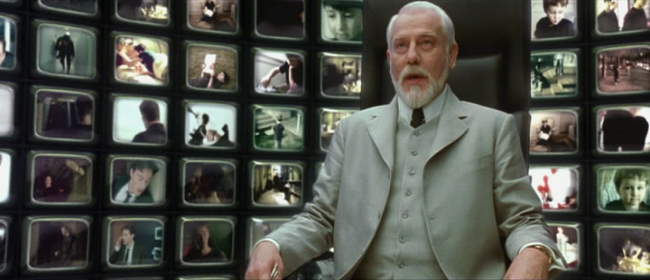In the Matrix trilogy, God is portrayed as a software Architect. The fact that the first movie was released in 1999 is appropriate since software code had begun to exert […]
Search Results
You searched for: Information and Communication Technology
The cover of this month’s issue of Fast Company has an excellent article by Anya Kamenetz on how smart phones are leading the charge in revolutionizing traditional methods of teaching and learning. […]
When we think of the Internet of Things, we tend to think of our microwave talking to our mobile phone or our car chatting with our home air conditioning system. […]
The most recent recipient of the Pulitzer Prize for Editorial Cartooning is Mark Fiore, a freelancer whose only medium is electronic. His iPhone app was rejected long before he was […]
The information technology expert believes rich communication between computers and humans is the wave of the future.
▸
1 min
—
with
Since time immemorial people have considered two ways to be immortal: through one’s progeny or by displaying spectacular achievement in the sciences, arts or politics. Now there’s another way: Tweeting. […]
After the Federal Communications Commission unveiled its national plan for the future of broadband Tuesday, Democratic lawmakers began hailing it as a success that will shape the future of everything […]
I spoke with one of Atlanta’s former mayors last week about the new advocacy organization she had just joined. Shirley Franklin, the first black woman to run the city, seems […]
Yesterday I linked to the Becker-Posner blog which is kept by two University of Chicago professors: Gary Becker and Richard Posner. Becker is an economist and Nobel Laureate and Posner […]
Nanotechnology, when perfected, may lead to developments including robotic muscles, solar cells, or synthetic muscles for humans.
Plastic Logic finally released its much-anticipated QUE reader today, along with news of agreements that a forest full of books, magazines and newspapers will be available on the device. The […]
Our idea offers a solution for how the for-profit health insurance provider business model can be innovated on to not only allow for active participation and collaboration by policyholders in the creation of value, generate additional revenue and help finance the cost of health plans, but also provide for the realization of an improved, and invariably more productive alignment of interests and strategies across the entire healthcare value network.
Our idea offers a solution for how the for-profit health insurance provider business model can be innovated on to not only allow for active participation and collaboration by policyholders in the creation of value, generate additional revenue and help finance the cost of health plans, but also provide for the realization of an improved, and invariably more productive alignment of interests and strategies across the entire healthcare value network.
the evolutions and revolutions of the human social sytems and system.
Preter-Natural Leadership Success Tenets By Andres Agostini (Andy)
In today’s world, we are increasingly becoming more and more connected. It wasn’t that long ago that being connected meant having a pager on your hip or a cell phone […]
Nearly every new technology is hailed (at least by its creators) as one that will “revolutionize” this or that aspect of our lives. Upon closer examination, however, the hype is […]
When Network World selected 9 technologies IT pros should master in 2009, two of them were microblogging platforms: Twitter and Yammer. While most people are familiar with Twitter, relatively few […]
It has become fashionable to castigate Twitter – the microblogging service – as an expression of rampant narcissism. Yet, narcissists are verbose and they do not take kindly to limitations imposed on them by third parties.
The pursuit of “energy security” has brought us to the brink. It is directly responsible for numerous wars, big and small; for unprecedented environmental degradation; for global financial imbalances and meltdowns; for growing income disparities; and for ubiquitous unsustainable development.
This essay describes a model for urban development that takes into account and makes use of the externalities that exist in the built environment. Buildings and the people that inhabitat them makes neighborhoods and vice versa the value of a building is in its locations. How can better frame this relationship between an object and its environment? How can develop strategies for a integral area development that learn from the best global examples?
Europe has wisdom, sense, spirits and a good virtue. Yet, it appears that she disorderly managed valuable values.
It is the time now to reinvent these and to work together on widening and deepening, due to believes in our prosperity and welfare.














